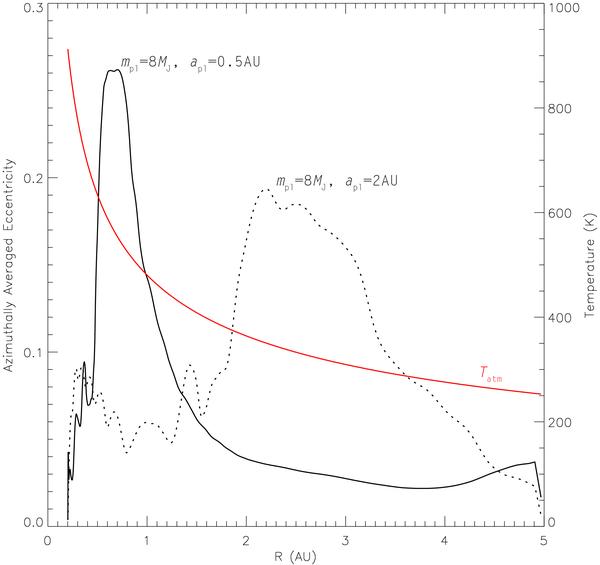Fig. 7

Azimuthally averaged eccentricities in the “wide” (dotted black) and “tight” (solid black) version of model #8 (mpl = 8MJ, m∗ = 1 M⊙) and the atmospheric temperature (red). It is apparent that even though the eccentricity maximum is smaller in the “wide” system, the disk is more eccentric on average than in the “tight” model. At the same time the planet signal becomes stronger in the “tight” (see Fig. 8f) than in the “wide” (see Fig. 8e) model, because the disk atmosphere is considerably hotter at 0.5 AU than 2 AU, where the disk is dynamically perturbed by the planet.
Current usage metrics show cumulative count of Article Views (full-text article views including HTML views, PDF and ePub downloads, according to the available data) and Abstracts Views on Vision4Press platform.
Data correspond to usage on the plateform after 2015. The current usage metrics is available 48-96 hours after online publication and is updated daily on week days.
Initial download of the metrics may take a while.


